What are the defining features of a Red Rocks Amphitheatre planter box?
Picture it in your mind: red stone boxes, trees, dirt, one on either end of each row. You probably don't give the planter boxes much thought, but they're at the center of an ongoing historic preservation battle — and have been since 1999.
It was that year that Friends of Red Rocks formed, and for exactly that reason. Back then, it was about a plan to convert the tree-filled boxes into corporate boxes. In 2018, the plan is to add railings.
Denver Arts & Venues says it's a safety and compliance issue. Anything with a 30-inch drop-off is required by international building code to have railings, director of market and communications Brian Kitts explained.
Friends of Red Rocks and other opponents of the proposal say the railings would be an eyesore in conflict with the historic natural setting and possibly a bigger safety hazard.
The proposal has been taken off the table twice in the last year. The first time was in December 2017. It resurfaced this June but has again been withdrawn, and it's unclear when it will be resubmitted.
According to a timeline in the most recent proposal, it all started in December of 2016, when the city attorney advised that guard rails were needed. Since then, there have been two mockups for the railings, both reviewed by representatives of Denver Arts & Venues, Denver Public Works, the National Park Service and State Historic Preservation Office.
"I’m not aware of what the reason is for pulling it this time around," said Amy Harris, who sits on the board for Friends of Red Rocks. "If I had to guess, I think it probably has something to do with getting a little firmer ground that railings are required by the building code or that the city attorney has given a directive."
The proposal called for railings, tree replacements and paving (sort of).
This is all subject to change now that it's off the table, but here's what the latest proposal called for:
"The holistic rehabilitation of the planter boxes will reestablish the historic intent while addressing current use. It will be accomplished by repairing and infilling vegetation in outer edges of the planter boxes. Existing trees in fair and good condition will remain, new native shrub species will be planted, and a small area defined for gathering is proposed at the interior edges."
In detail, that means replacing dying trees and adding new trees and shrubs in about half of each box. The other half would be filled in with fake soil and enclosed with a railing.
Here's an overall look:
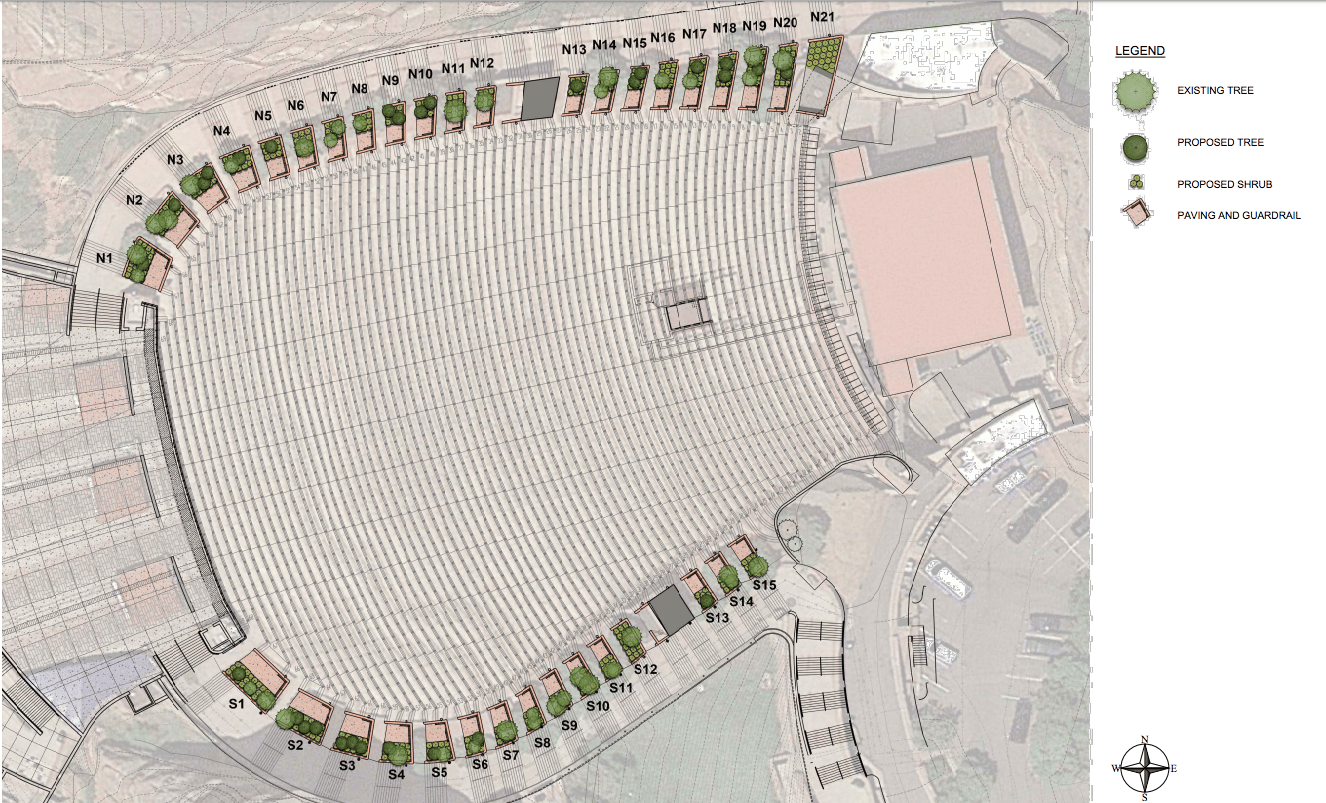
You can see the redesign wouldn't be uniform across all the boxes. Here's a closer look at one style:
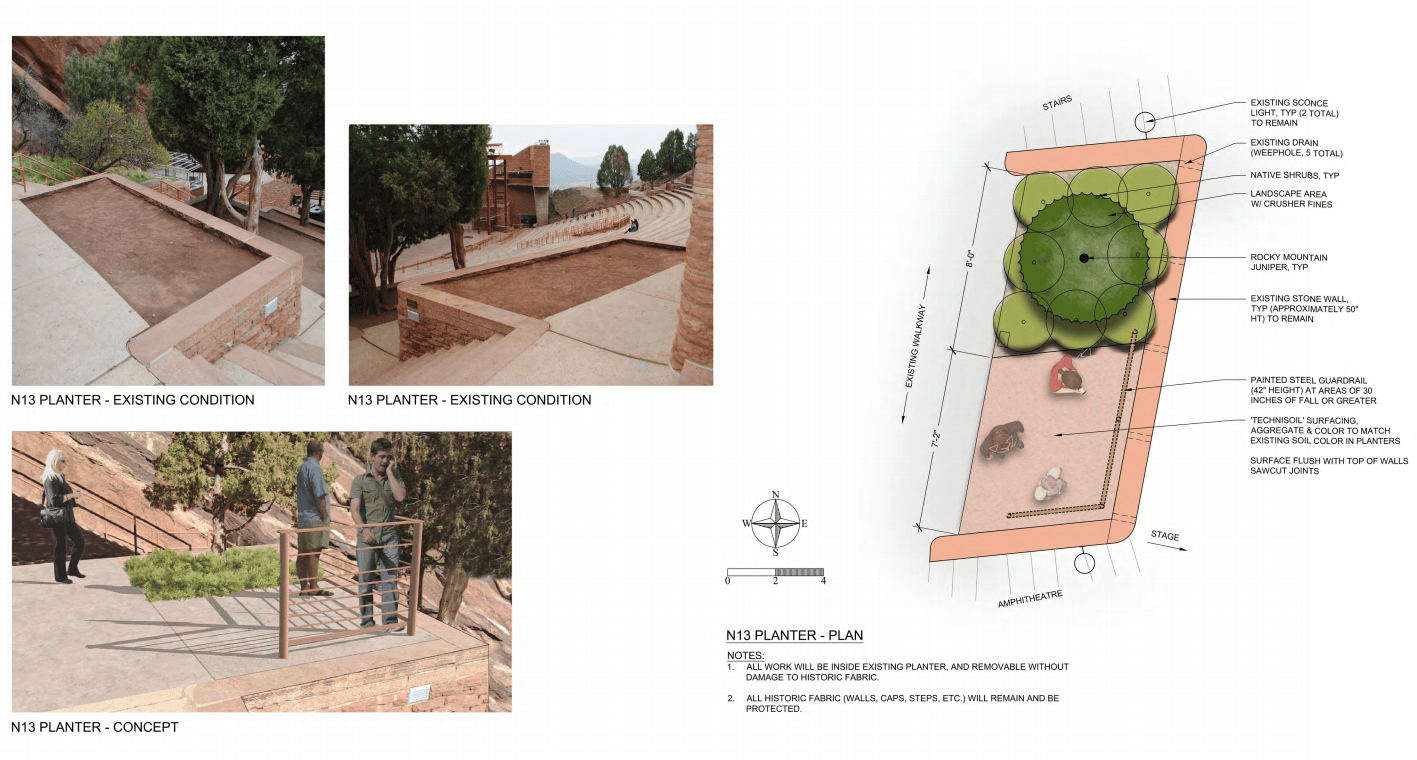
So what's the problem?
"The plan itself, not all of it is bad. If it weren’t for the railings, I don’t expect that we would be opposed to it at all," Harris, of Friends of Red Rocks, said.
They're not consistent with the original architecture, Friends of Red Rocks argues, and they're not very nice to look at.
"The planter boxes were designed to screen spectators from the adjacent stairs, as well as to act as a natural buffer between the Amphitheatre seats and the iconic monoliths. Promoting additional spectator use of the planter boxes is counter to these original purposes," the group's July 13 letter says.
Safety is another concern. Harris said the boxes become more dangerous with railings because rather than sitting on the edges of the box, people will sit on the railings. Plus, she said, it's never been a problem before.
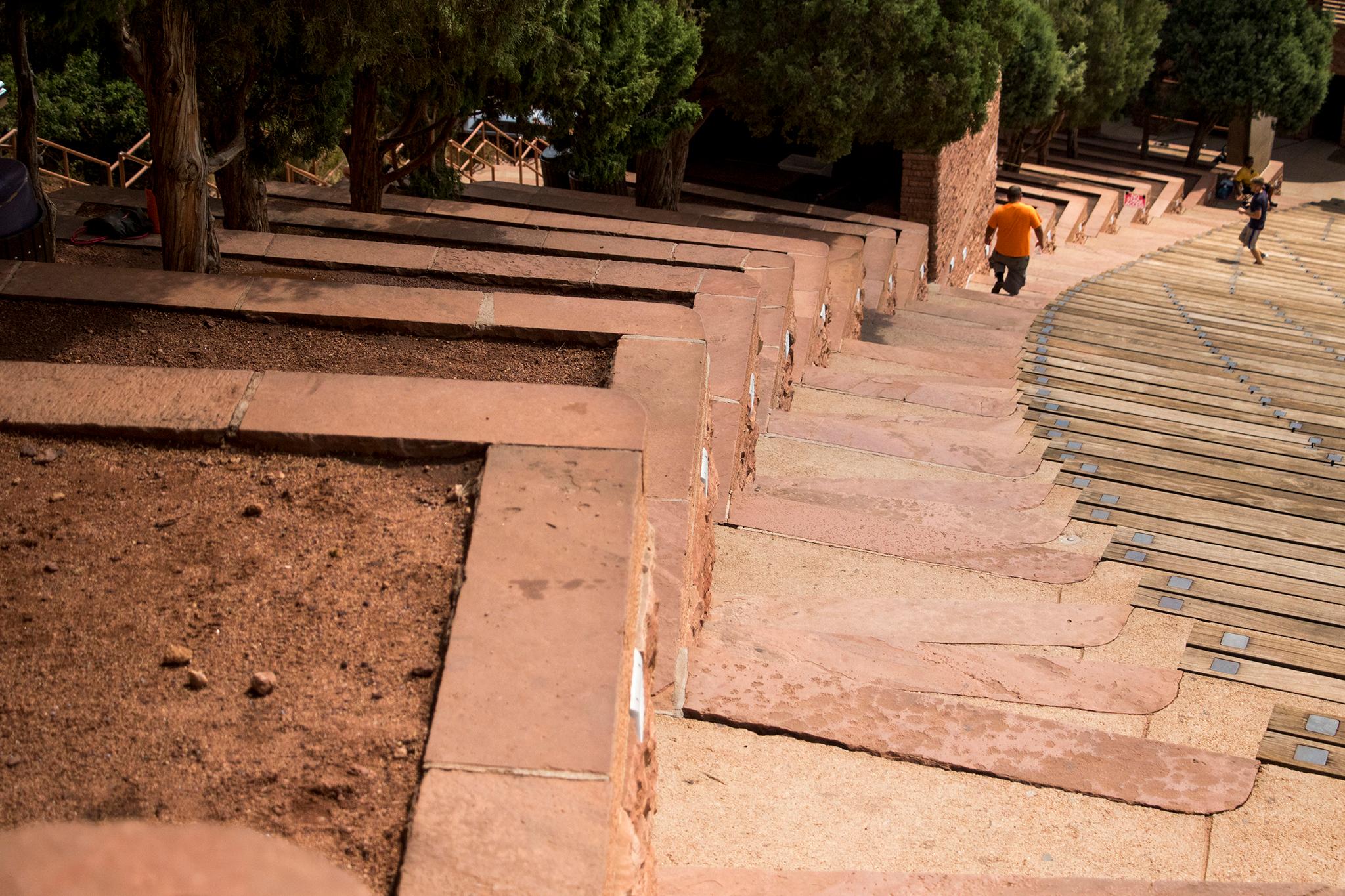
And then there's that old fear dating back to 1999.
Friends of Red Rocks believes the proposed changes would (pretty literally) pave the way to corporate boxes with high-price seating and advertising.
This is not the intention of Arts & Venues, and though Friends of Red Rocks knows that, the board doesn't want to open the door to the possibility that it could happen in years to come.
"They basically thought that they could rip out all the things back then in 1999 and convert them to seating, which they called corporate box seats because the idea was to sell them at a premium to corporations," said Steve Good, a founding member of Friends of Red Rocks. "... This was proposed and at the same time there was a plan to project advertising up on the rocks, Ship Rock and Creation Rock. They went forward at the same time and I think five members of the public, myself included, showed up and said, "Corporate box seats? This is a CCC project, right?"
Civilian Conservation Corps was part of President Franklin D. Roosevelt's New Deal. It was a public work relief program for unemployed, unmarried men that operated from 1933-42, and it was crucial to the construction of the amphitheater. And as former Denver Councilwoman At-large and self-identified "civic curmudgeon" Susan Barnes-Gelt said, Red Rocks is considered a "crown jewel" of the CCC projects.
"It’s considered the crown jewel because it's human, modest intervention in an incredible setting," said Barnes-Gelt, who has long made good land use and design her focus. "The rocks create an incredible natural amphitheater. That has nothing to do with human beings."
Arts & Venues has not said it would turn the planter boxes into corporate boxes, and in fact has specifically said it would not.
"I think that this is a terrible game of telephone, and I think that Friends of Red Rocks started saying this is the first step toward luxury boxes there and at some point you have to call bullshit on that," Kitts said.
He emphasized that not only is this a safety issue, it's a safety issue that legally requires them to take action. If people are going to sit and stand on the boxes, there need to be railings.
And if that's the case, Friends of Red Rocks thinks they should just fill in the entire boxes with plants.
"If we have a choice between being able to use those boxes for viewing and having railings, and not being able to use those boxes and not having railings, we would say, OK, let’s not use the boxes for viewing," Harris said.

But Arts & Venues says that plan messes with a different history: the use of the boxes as viewing areas.
"For the past several years — decades, literally — those have been used for people to sit and stand in during shows," Kitts said. "[Their plan] changes the way those planter boxes have been used over the decades. I think we are going to have to agree to disagree."
Eventually, this will be in hands of the Landmark Preservation Commission.
The Landmark Preservation Commission reviews and changes to the exterior of any property that's either a landmark or located in a historic district if the change requires a building or zoning permit. In the case of Red Rocks Amphitheatre, a Denver historic landmark, changing the planter boxes requires a building permit.
"One of the things about this project is that the railings were proposed for life safety purposes," Landmark Preservation manager Jenn Cappeto said.
The more visible a historic structure is, the more guidelines that apply to it. So, yes, there are a lot of guidelines to follow before anyone can make changes to Red Rocks. There's also a federal level, as Red Rocks became one of Denver's two National Historic Landmarks in 2015, but that designation does not come with preservation guidelines.
Denver's other National Historic Landmark, Civic Center (designated in 2012), has something its peer in foothills does not: its own preservation guidelines.
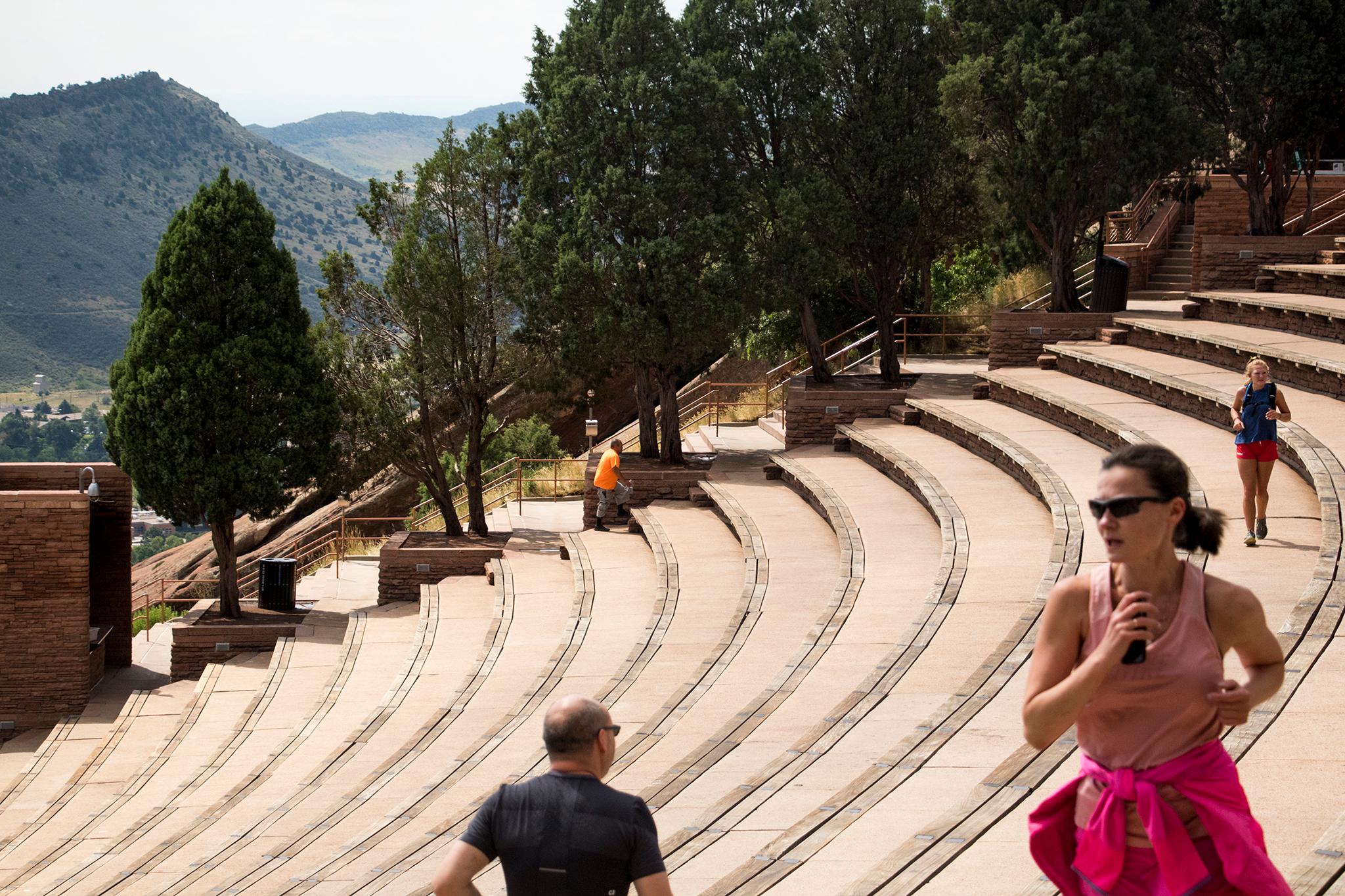
Red Rocks was designated a Denver historic landmark in 1973, "long enough ago that we didn’t develop specific guidelines for it," Cappeto said. Civic Center became a historic district in 1976 and, in 2009, the Landmark Preservation Commission approved the Civic Center Design Guidelines as a supplement to the 2005 Civic Center Park Master Plan.
So Red Rocks falls under the current general guidelines, which were adopted in 2014 and updated with some minor changes and clarifications in 2016.
"Red Rocks should have its own specific set of guidelines," Harris said. "Before we make any big changes to Red Rocks, we need specific guidelines in place. Most historic guidelines have to do with neighborhoods, homes. It just doesn’t really speak to an amphitheater in an outdoor park."
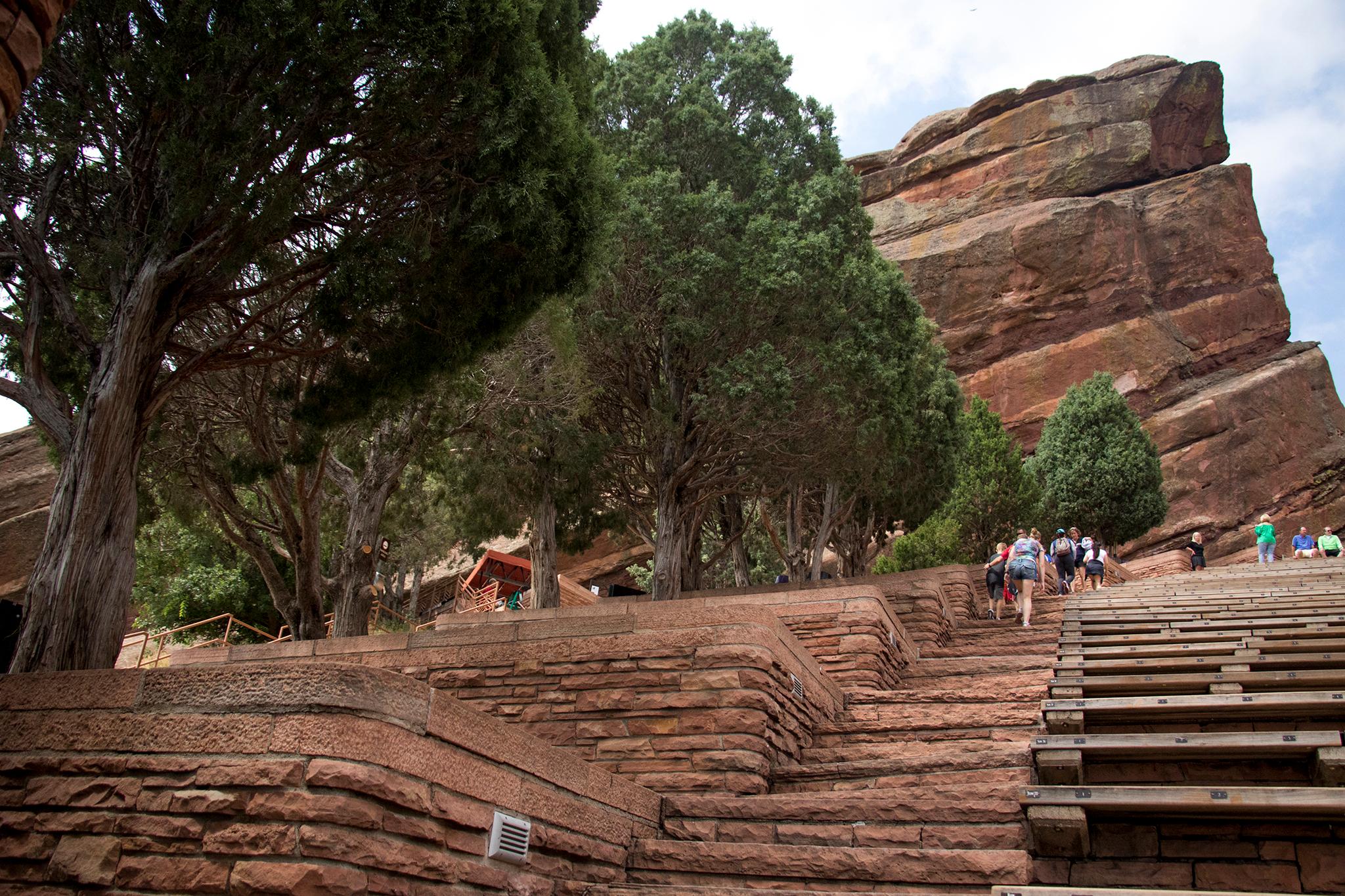
The Landmark Preservation Commission doesn't see a need. It's navigated changes without site-specific guidelines, from drainage system repairs to Trading Post renovations.
"It’s not something that we have for our current consideration. We are often approached about creating specific design guidelines for individual landmarks or historic districts," Cappeto said. "We try to channel that interest into updating the general guidelines."
Next steps:
Well, that's a bit of a mystery.
Kitts said Arts & Venues will continue to work on its proposal and, again, they have no deadline.
Harris said Friends of Red Rocks checks in frequently to see if proposals have been submitted. Landmark Preservation Commission rules require at least one month between a proposal's submission and a vote on it, she said. Neither she nor Cappeto have any sense of when the next one might arrive.
Correction: This article has been updated to clarify that National Historic Landmarks do not have federal preservation guidelines.













